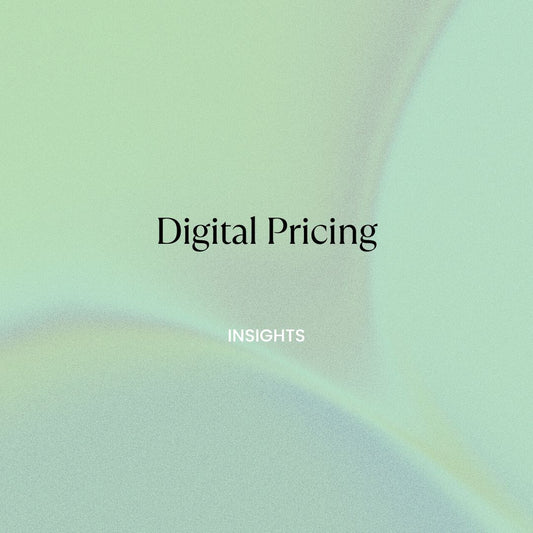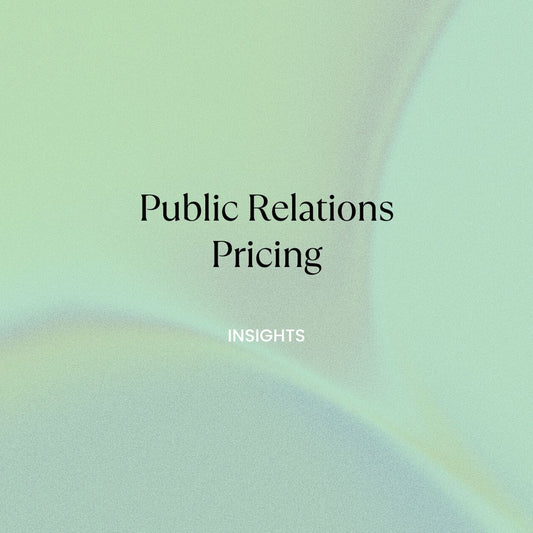Conversion rate optimization plays a crucial role in the success of e-commerce businesses, as it directly impacts sales and revenue. An optimized website not only improves user experience but also increases the likelihood of visitors making a purchase. Soda Spoon, an e-commerce marketing agency, specializes in designing and developing dynamic online experiences that showcase a brand's identity. Their main focus lies in using data-backed strategies to optimize websites for better conversions, making them the go-to experts for e-commerce businesses seeking growth.
Understanding Conversion Rate Optimization (CRO)
Conversion rate optimization, or CRO, is the process of improving a website's ability to convert visitors into customers, ultimately boosting sales and revenue. In the context of e-commerce, CRO is particularly important as it directly impacts a business's bottom line.
There are several key metrics that can help measure the effectiveness of e-commerce conversions, including:
- Conversion rate: the percentage of website visitors who complete a desired action, such as making a purchase.
- Bounce rate: the percentage of visitors who leave a website after only viewing one page.
- Exit rate: the percentage of visitors who leave a website from a specific page, indicating potential issues with that page.
- Click-through rate (CTR): the percentage of visitors who click on a specific link or call-to-action (CTA) button.
- Average session duration: the amount of time visitors typically spend on a website, indicating their level of engagement.
- Average page depth: the number of pages viewed per session, also known as Pages per Session in Google Analytics.
By understanding and tracking these metrics, e-commerce businesses can identify areas for improvement and implement data-driven strategies to optimize their websites for better conversions.
Essential Conversion Rate Optimization Tips for E-commerce Businesses
In order to create an e-commerce website that is both user-friendly and optimized for conversions, businesses should focus on implementing the following essential conversion rate optimization tips:
- High-quality images and videos on product pages: Visuals play a crucial role in helping customers make informed decisions. By using high-quality images and videos, you can showcase your products more effectively, leading to increased conversions.
- Competitive pricing and limited-time coupon codes: Offering competitive prices and limited-time coupon codes can entice customers to make a purchase, ultimately driving sales and revenue.
- Streamlined checkout process and guest checkout option: A smooth and efficient checkout process can greatly impact conversion rates. By simplifying the process and offering a guest checkout option, you can reduce cart abandonment and increase conversions.
- Trust signals and secure payment gateways: Building trust with customers is essential for e-commerce success. Display trust signals such as security badges, payment logos, and customer testimonials to assure visitors that their information is safe and secure.
- Mobile device optimization: With the growing number of shoppers using mobile devices to make purchases, optimizing your e-commerce website for mobile users is crucial. Ensure that your website is mobile-responsive and offers a seamless shopping experience across all devices.
By implementing these essential conversion rate optimization tips, e-commerce businesses can create a website that not only offers a superior user experience but also drives conversions and maximizes revenue.
Enhancing User Experience and Navigation
A user-friendly e-commerce website is crucial for attracting and retaining customers. By enhancing user experience and navigation, you can create a website that not only offers a superior shopping experience but also drives conversions. Here are some ways to improve user experience and navigation on your e-commerce site:
- Clear site structure and easy product discovery: Ensure your website has a clear and logical structure, with well-organized categories and subcategories, making it easy for visitors to find and discover products. This can lead to increased customer satisfaction and higher conversion rates.
- Detailed product descriptions and customer reviews: Providing detailed product descriptions, along with authentic customer reviews, helps visitors make informed decisions about their purchases. This can lead to increased trust in your brand and higher conversion rates.
- Prominent "Add to Cart" and "Checkout" buttons: Make sure your "Add to Cart" and "Checkout" buttons are easily visible and accessible on your website. This can encourage customers to take action and complete their purchases, ultimately driving conversions.
- Filters and search functionality within categories: Offering filters and search functionality within product categories enables visitors to quickly and easily find the products they are looking for, leading to a better shopping experience and higher conversion rates.
By focusing on enhancing user experience and navigation, e-commerce businesses can create a website that is both user-friendly and optimized for conversions, ultimately leading to increased sales and revenue.
Building Trust and Customer Loyalty
Establishing trust and fostering customer loyalty are essential components of a successful e-commerce business. By implementing the following practices, businesses can create a trustworthy shopping experience that encourages repeat purchases and customer retention:
- Displaying customer reviews and testimonials: Authentic customer reviews and testimonials can significantly increase trust in your brand. By showcasing real experiences from satisfied customers, potential buyers are more likely to feel confident in their purchasing decisions, leading to higher conversion rates.
- Transparent return policy and shipping information: Providing clear and transparent information about your return policy and shipping options can help alleviate any concerns customers may have about purchasing from your website. This transparency can not only improve the shopping experience but also enhance trust in your brand.
- Encouraging account creation at the right time: Although allowing guest checkouts is important for a smooth customer journey, encouraging account creation at the appropriate time can help build customer loyalty. Offering incentives such as discounts or exclusive access to new products can entice customers to create an account, leading to increased loyalty and repeat purchases.
- Prominent display of contact information and support options: Making your contact information and customer support options easily accessible demonstrates that your business is available and responsive to customer inquiries. This visibility can help build trust and ensure customers feel supported throughout their shopping experience.
By focusing on building trust and fostering customer loyalty, e-commerce businesses can create a lasting relationship with their customers, ultimately driving long-term success and growth.
Leveraging Data and User Feedback
One of the most effective ways to optimize an e-commerce website for conversions is by leveraging data and user feedback. This approach not only provides valuable insights into user behavior but also helps identify areas for improvement. Here are some key strategies for leveraging data and user feedback:
Using analytics tools to measure CRO success: Implementing analytics tools like Google Analytics can help track key metrics and measure the effectiveness of your conversion rate optimization efforts. This data-driven approach enables businesses to make informed decisions about which strategies are working and which need improvement.
Conducting user surveys and interviews: Gathering feedback directly from customers through surveys and interviews can provide valuable insights into their preferences, pain points, and overall shopping experience. This information can be used to make targeted improvements to your website, ultimately leading to higher conversion rates.
Utilizing CRO tools like HotJar and Google Analytics: Tools such as HotJar and Google Analytics can help businesses better understand user behavior on their websites. These tools provide insights into user interactions, navigation, and other key factors that can impact conversion rates. By analyzing this data, businesses can make data-driven decisions to optimize their websites for better conversions.
Observing customer behavior to improve site navigation and experience: Paying close attention to how customers interact with your website can reveal areas for improvement. By observing customer behavior and identifying any issues or bottlenecks in the user journey, you can make targeted changes to create a more seamless and enjoyable shopping experience, ultimately driving higher conversion rates.
Testing and Iterating for Continuous Improvement
One of the key aspects of successful conversion rate optimization is the continuous process of testing and iterating. Regular testing and analysis of your e-commerce website help identify areas for improvement and ensure that your optimization efforts are effective. It is essential to be proactive in making adjustments based on the insights gained from these tests.
However, it's important to avoid common CRO mistakes, such as making too many changes at once or not having a clear roadmap for testing and improvement. By implementing a strategic roadmap for CRO, businesses can systematically test various aspects of their websites and measure the impact of each change, leading to more informed decisions and better results.
Ultimately, a data-driven and iterative approach to conversion rate optimization allows e-commerce businesses to continuously improve their websites, resulting in a better user experience and higher conversion rates over time.
How Soda Spoon Can Help Boost E-commerce Conversions
As an e-commerce marketing agency, Soda Spoon specializes in designing and developing optimized e-commerce websites that showcase a brand's identity. By partnering with Soda Spoon, businesses can benefit from their expertise in crafting data-driven strategies to improve conversions, ultimately leading to increased sales and revenue.
Soda Spoon has experience working with businesses from various industries, including art, automotive, cannabis, furniture, home services, professional services, and software. This diverse expertise allows them to tailor their services to the unique needs of each client, ensuring optimal results.
With an agile team and a commitment to client satisfaction, Soda Spoon focuses on open communication and regular check-ins, providing a streamlined process for their clients. Their dedication to delivering high-quality e-commerce solutions, combined with their data-driven approach to conversion rate optimization, makes Soda Spoon the go-to expert for e-commerce businesses seeking growth.
For more information on how Soda Spoon can help boost your e-commerce conversions, visit their website at https://www.sodaspoon.com/pages/ecommerce.
Unlock E-commerce Success
Implementing effective conversion rate optimization tips is crucial for e-commerce businesses to thrive. By focusing on user experience and utilizing data-driven strategies, you can significantly improve your website's conversion rates and boost sales. Partner with Soda Spoon, an expert in e-commerce optimization, to maximize your online presence and grow your business. Check out their services at https://www.sodaspoon.com/pages/ecommerce and start unlocking your e-commerce success today!












